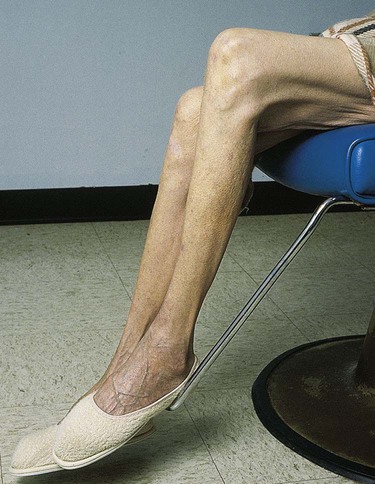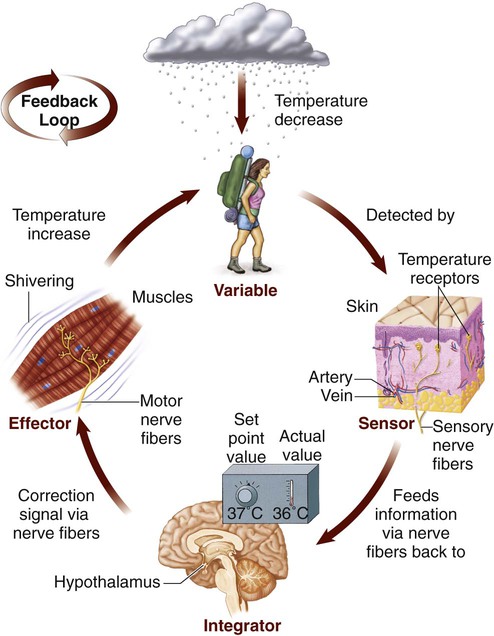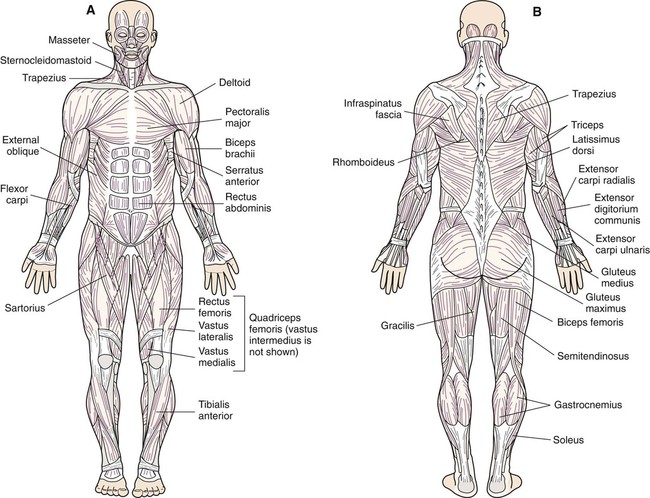Chapter 15 *A transition syllable or vowel may be added to or deleted from the word parts to make the combining form. The human body has more than 600 muscles. The three types of muscle tissue are skeletal, visceral, and cardiac (Table 15-1). Muscles do the following: Skeletal muscles make up more than 40% of a person’s body weight. They increase in size and weight with exercise and decrease with inactivity. Muscle size and strength vary among people because of genetic differences and nutritional and exercise habits. Muscles are attached to bones by tendons, which are narrow strips of dense connective tissue. Muscles are named according to their location, related bones, shape, action, or size (Fig. 15-2). Skeletal muscle tissue looks striated, or banded, under the microscope (Fig. 15-3). Striated muscle is made of bundles of fine fibers. The number of muscle fibers does not increase much after birth. Increase in muscle mass is due to an increase in the size of the fibers. Fascia is a layer of fibrous connective tissue that separates individual muscles.
Muscular System
 Define at least 10 terms relating to the muscular system.
Define at least 10 terms relating to the muscular system.
 Describe the six functions of the muscular system.
Describe the six functions of the muscular system.
 Identify at least 10 structures of the muscular system and the function of each.
Identify at least 10 structures of the muscular system and the function of each.
 Describe at least three methods of assessment of the muscular system.
Describe at least three methods of assessment of the muscular system.
Term
Definition
Prefix
Root
Suffix
Atrophy
Without growth, wasting away
a
troph
y
Biceps
Muscle with two heads
bi
ceps
Blepharospasm
Uncontrolled muscle contraction of the eyelid
blepharo
spasm
Dystrophy
Faulty growth
dys
troph
y
Fibromyositis
Inflammation of the muscle tissues
fibro
my/os
itis
Myalgia
Muscle pain
my
algia
Myoma
Tumor of the muscle
my
oma
Myometrium
Muscle of the uterus
my/o
metrium
Quadriceps
Muscle with four heads
quadr/i
ceps
Visceral
Pertaining to the inside
viscer
al
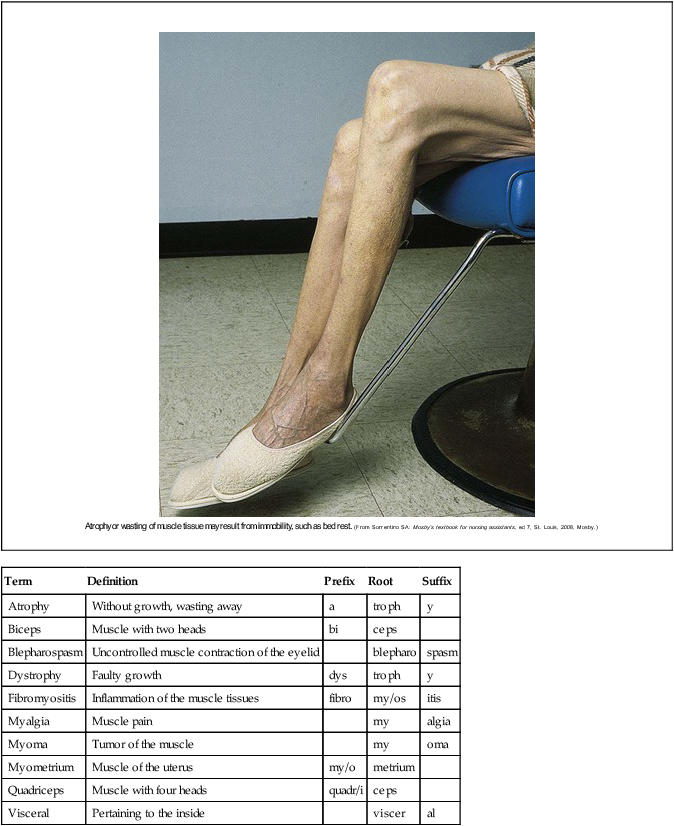
Structure and Function of the Muscular System
 Irritability or excitability is the muscle’s ability to respond to a stimulus such as a nerve or hormone.
Irritability or excitability is the muscle’s ability to respond to a stimulus such as a nerve or hormone.
 Contractility is the muscle’s ability to shorten forcefully when stimulated.
Contractility is the muscle’s ability to shorten forcefully when stimulated.
 Extensibility is the muscle’s ability to stretch and lengthen.
Extensibility is the muscle’s ability to stretch and lengthen.
 Elasticity is the muscle’s ability to recoil to its resting length when relaxed.
Elasticity is the muscle’s ability to recoil to its resting length when relaxed.
Types of Muscle Tissue
Skeletal Muscle
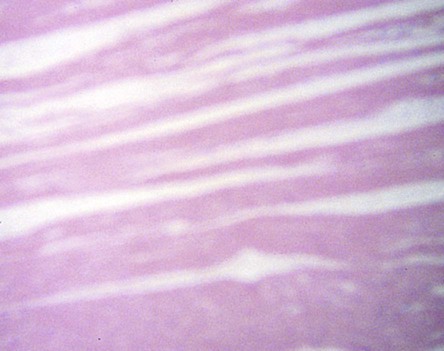
![]()
Stay updated, free articles. Join our Telegram channel

Full access? Get Clinical Tree


Nurse Key
Fastest Nurse Insight Engine
Get Clinical Tree app for offline access


